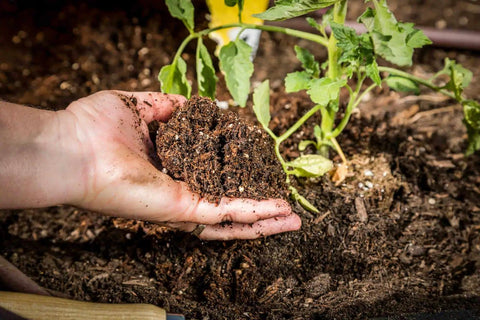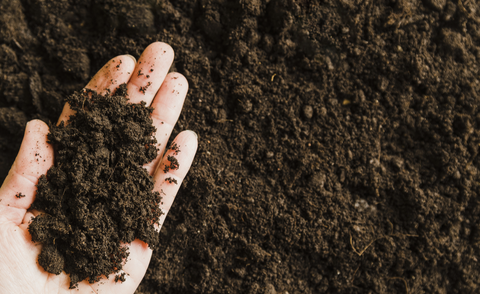Companion planting is a gardening practice that involves strategically planting different species of plants together to maximize their growth, enhance flavor, and deter pests. It's an age-old technique that harnesses the synergistic relationships between various plants. One herb that greatly benefits from companion planting is parsley. In this comprehensive guide, we'll explore the world of parsley, discuss the best companion plants to grow alongside it, and provide you with tips on successfully cultivating parsley in your home garden.The following content also has some reference value for raised garden beds.
The Beauty of Parsley
Parsley (Petroselinum crispum) is an herb that holds a special place in the world of culinary and ornamental gardening. Its lush, green leaves and distinctive flavor make it a versatile addition to both your kitchen and your garden. There are two primary types of parsley: flat-leaf (Italian) and curly-leaf. Here are some reasons why parsley deserves a spot in your garden:
- Culinary Excellence: Parsley is a versatile culinary herb used in a wide range of dishes. Its fresh, bright flavor complements everything from salads and soups to sauces and main courses.
- Nutritional Value: Beyond its delicious taste, parsley is packed with essential nutrients. It's a good source of vitamins A, C, and K, as well as folate and iron.
- Medicinal Uses: Parsley has a history of medicinal use. It's believed to have diuretic properties and may aid digestion and freshen breath.
- Companion Plant: Parsley is not just a culinary herb; it's also an excellent companion plant in your garden. When grown alongside the right companions, it can contribute to healthier and more productive crops.
Now that you understand the value of parsley, let's explore companion planting and discover which plants thrive alongside this versatile herb.

Companion Plants for Parsley
Companion planting is all about creating beneficial relationships between plants. When you pair parsley with the right companions, you can enhance its growth, deter pests, and create a harmonious garden ecosystem. Here are some of the best companion plants for parsley:
1. Tomatoes
Why They're Good Companions: Parsley and tomatoes are excellent companions in the garden. Parsley can help repel tomato hornworms, a common tomato pest. Additionally, both parsley and tomatoes thrive in full sun, making them suitable garden bedmates.
Planting Tips: Plant parsley and tomatoes near each other in a sunny spot in your garden. Consider creating raised beds for optimal drainage and soil quality.
2. Asparagus
Why They're Good Companions: Parsley and asparagus have complementary growth patterns. Asparagus grows tall and fern-like, providing partial shade to parsley, which prefers some protection from intense sunlight. Parsley's scent can also help deter asparagus beetles.
Planting Tips: Plant parsley around the base of your asparagus plants. This arrangement not only benefits both plants but also maximizes space in your garden.
3. Onions
Why They're Good Companions: Parsley and onions make excellent companions in the garden. Parsley's strong scent can help deter onion flies and other pests that often affect onions. Conversely, onions can help deter pests that may bother parsley.
Planting Tips: Plant parsley and onions together in your garden beds. They can grow alongside each other without competing for resources.
4. Chives
Why They're Good Companions: Chives and parsley share similar growing conditions and requirements. They both thrive in well-draining soil with ample sunlight. Planting them together can create an aesthetically pleasing herb garden corner.
Planting Tips: Interplant chives and parsley in close proximity, allowing their vibrant green foliage to complement each other.

5. Carrots
Why They're Good Companions: Parsley can benefit carrots in a couple of ways. Its scent can help deter carrot flies, a common pest that affects carrots. Additionally, parsley's deep roots can help improve soil structure, benefiting carrot growth.
Planting Tips: Plant parsley near your carrot rows, either as a border or intermixed between carrot plants.
6. Lettuce
Why They're Good Companions: Parsley and lettuce share similar light and moisture requirements. Parsley's upright growth can provide some shade for lettuce, preventing it from bolting too quickly in hot weather.
Planting Tips: Consider planting parsley and lettuce together in container gardens or raised beds for easy access to both fresh herbs and greens.
7. Rosemary
Why They're Good Companions: Parsley and rosemary can create a harmonious herb garden. Parsley's lower growth habit contrasts beautifully with rosemary's tall, woody stems. Additionally, parsley can help repel aphids, which may bother rosemary.
Planting Tips: Create a dedicated herb garden bed where parsley and rosemary can grow alongside other herbs like basil, thyme, and oregano.
8. Marigolds
Why They're Good Companions: While not a culinary companion, marigolds make excellent companion plants for parsley. Marigolds are known for their pest-repelling properties, particularly against nematodes and aphids. Planting marigolds near your parsley can help protect it from unwanted garden visitors.
Planting Tips: Place marigolds in the vicinity of your parsley, creating a protective barrier around your herb garden.
Tips for Growing Parsley in Your Home Garden
Now that you know which plants make excellent companions for parsley, let's delve into the art of growing parsley successfully in your home garden:
Choose the Right Parsley Variety
Parsley comes in two primary varieties: curly-leaf (common) and flat-leaf (Italian). Choose the one that suits your culinary preferences. Flat-leaf parsley is often favored for its robust flavor, while curly-leaf parsley is used mainly as a garnish.
Select a Suitable Location
Parsley thrives in well-draining soil with at least 6-8 hours of sunlight daily. Ensure your garden bed or container receives adequate sunlight.
Prepare the Soil
Parsley prefers soil with good fertility and organic matter. Amend your soil with compost or well-rotted organic matter to provide the necessary nutrients.
Sow Parsley Seeds
Parsley can be grown from seeds or transplants. If starting from seeds, soak them in warm water for 24 hours before planting to speed up germination. Sow seeds about 1/4 inch deep in rows or containers.
Thin Seedlings
Once your parsley seedlings emerge, thin them to the recommended spacing, typically 6-8 inches apart. This allows each plant enough room to grow.

Watering
Keep the soil consistently moist but not waterlogged. Parsley prefers even moisture to prevent wilting and bolting.
Fertilization
Fertilize parsley with a balanced, all-purpose fertilizer every 4-6 weeks. Avoid high-nitrogen fertilizers, as they can promote excessive leafy growth at the expense of flavor.
Mulching
Applying a layer of mulch around your parsley plants helps retain moisture, regulate soil temperature, and reduce weed competition.
Harvesting Parsley
You can start harvesting parsley leaves once the plant has developed several sets of leaves. Harvest from the outer edges of the plant, using scissors or your fingers to snip the leaves.
Overwintering
Parsley is a biennial plant, meaning it typically completes its life cycle over two years. In its second year, it may produce flowers and seeds. You can overwinter parsley by providing some protection during the colder months, extending its productivity.
Troubleshooting Common Parsley Issues
Despite its many virtues, parsley can face a few common challenges in the garden. Here's how to address them:
- Parsley Caterpillars: Keep an eye out for parsley caterpillars, the larvae of swallowtail butterflies. Handpick them or use an organic insecticidal soap if their numbers become problematic.
- Fungal Diseases: Parsley can be susceptible to fungal diseases, especially in humid conditions. Ensure good air circulation, avoid overhead watering, and use a fungicide if necessary.
- Bolting: Parsley can bolt (produce flowers and go to seed) prematurely in hot weather. Plant it in partial shade or provide shade during the hottest part of the day to prolong its leafy growth.
- Aphids: Aphids can occasionally infest parsley. Use a strong stream of water or insecticidal soap to remove them from your plants.
- Overwatering: Avoid overwatering, as it can lead to root rot and other moisture-related issues. Allow the top inch of soil to dry out slightly between waterings.
Conclusion
Growing parsley in your home garden can be a rewarding experience. This versatile herb not only adds flavor and freshness to your culinary creations but also contributes to a healthier and more productive garden when paired with the right companion plants.
By selecting the appropriate parsley variety, providing optimal growing conditions, and practicing companion planting, you can enjoy a bountiful harvest of parsley and a thriving garden filled with a variety of compatible plants. So, roll up your sleeves, dig into your garden bed, and let the beauty of parsley and its companions flourish in your green oasis.









